Patrick YoungThe Mid-Century Meditations Blog welcomes Guest Blogger Patrick Young of the AbleUSA Blog - https://ableusa.info/blog/ Working remotely and small space living are common these days. Read tips on creating a home office in a tiny space. Remote work is the new normal, which means home offices are more of a necessity now than a luxury. Unfortunately, property prices are through the roof at this time and even rentals are hard to come by. Finding an appropriate larger space – with an unused room that could double as your home office – is a challenging task in the current market. You may have to make do with a tiny living space instead, which you may have to share with a roommate or domestic partner. This can make working from home productively, long-term, a challenge. It is possible, though: All it takes is a little creativity and some clever redecoration. Danish Modern San Diego gives you some pointers on making a comfortable home office out of a small living space: Plan and BudgetDecide how much you are able spend on your home office. You could make a home office for next to no money or invest several thousand for something top-of-the-line. We recommend investing in well-made, sturdy furniture that will last. Be aware that desks and related pieces that attach to a wall may not be welcome as not all rental agreements permit you to make structural changes, as Justia can confirm. Purge Items You No Longer NeedLess is more when you live in a tiny apartment or studio. Decluttering will allow you to get rid of items you no longer need. Organize items into separate piles for giving away, donating, and recycling. If you are hesitant about getting rid of something, you can always put them in storage before you make a decision. Be sure to research options for San Diego storage carefully before you choose a unit. OrganizeOrganizing goes hand in hand with decluttering. By arranging everything you own properly, you can create more room and also find everything you need quickly. When it comes to your office space, keep the items you need close at hand. Organize your desk drawers so your most-used things are at the top, and the less-used ones at the bottom. Section Off An Unused CornerYou will have to be creative when delineating some space for your home office. You could, for example, put a desk next to your bed and also use it as a nightstand. Or you could have a desk that doubles as your dining table. You can use paneling or paint the wall a different shade to create a "work zone". Red and green can make you more productive, reports Color Meanings. Purchase Appropriate Office FurnitureA good desk and a comfortable chair are necessary for long work hours. The Remploy Bureau from England is a beautiful teak desk with an adjustable shelf, two frieze drawers, and a double-doored cabinet. You could build your office around it. Before purchasing anything, you might read product reviews from unbiased sources. Family care advice can help in this regard. Consider Noise Canceling HeadphonesNoise-canceling headphones may well be a necessity when noise from neighbors or your roommate is a concern. Without headphones, you may find yourself being interrupted frequently and have trouble mustering up the concentration you need to work. Decorate and PersonalizeLast, but not least, is the décor. Good décor can lift your mood, make you more productive, and generally make you feel more settled. Consider adding a rug, a lamp, a meaningful picture, a potted plant, and a scented candle. If you have the space, consider adding a bookcase. It is well worth your time to personalize your home office space to your liking as it will make it easier for you to slip into work mode. Also, you will be more comfortable while you work, which is essential to your productivity.
0 Comments
Megan CooperDanish Modern San Diego is pleased to welcome back Guest Blogger Megan Cooper from Real Life Home https://reallifehome.net/ The best home updates don’t just improve your living space; they also make it easier to relax and rejuvenate, whether you’re at home to unwind after work or trying to stay centered so that you can focus on other tasks. Whether you've just moved into a new place or want to overhaul your current abode, here are some of the best home updates to help you unwind and feel more focused at home. How to DeclutterThe first step to decluttering is to take everything out of the space you want to work on. Once everything is out, you can start sorting through your items. Keep what you need and use regularly, donate or sell what you don’t need, and throw away anything broken or damaged beyond repair. Once you've sorted through your items, put everything back in a way that makes sense and is easy to maintain. Add Indoor PlantsIndoor plants aren't only aesthetically pleasing, but they also have many benefits for your health. Plants can improve air quality, boost your mood, and reduce stress levels. If you don't have access to outdoor gardens, adding indoor plants is a great way to bring some greenery into your space. The variety of indoor plant choices makes it easy to find something that fits in with the décor of any room of the house. Create a Wellness SpaceA wellness space can be used for many things, such as meditation, yoga, or even a place to sit and relax. It's beneficial to have a space in your home dedicated to your well-being. To create a wellness space, choose a quiet spot in your home where you won't be disturbed. Then, ensure the space is clean and free of clutter. Consider adding some plants or flowers to bring in a touch of nature. Install Elevating LightingInstalling pendant lighting enhances the ambiance in your home. Hanging a pendant light lower to a more practical height can be beneficial if you have high ceilings. Additionally, pendant lights like these provide focused illumination in specific areas, such as over a dining table or kitchen island. A vast selection of pendant lights is available so before making a purchase, consider the styles, forms, finishes, and materials. Design a Backyard OasisCreate an oasis in your backyard by adding a few key features. Consider adding water features, such as a fountain or small pond. Then, add some greenery by planting flowers or shrubs. If you have space for planting trees, Tree Search Service has helpful knowledge for choosing the best trees for your yard and you can use their search service to find the best arborists and tree care experts near you. Another way to create a more relaxing environment is to install outdoor lighting and decking. A well-designed outdoor kitchen is also great because cooking outdoors is so much fun and makes it easy to entertain guests in San Diego. There are plenty of components to consider when designing an outdoor kitchen, including a grill, sink, refrigerator, and range hood. Some people prefer natural materials, such as wood; others want something that looks sleek and more modern. Achieve a Productive and Comfortable HomeDesigning a home where you can be productive and comfortable is easily achieved. Whatever you choose, let the design reflect who you are as a person while still fitting with the rest of your home's aesthetic.
Visit Danish Modern San Diego, an importer, restorer, and seller of vintage furniture from Europe and Scandinavia. Patrick YoungDanish Modern San Diego welcomes back to the Mid-Century Meditations blog guest blogger Patrick Young of AbleUSA - https://ableusa.info/blog/ Enjoying A Dream, Avoiding A NightmareFor many people, buying a home together is the fulfillment of a happy dream and one of the most significant achievements of their relationship. Unfortunately, home buying can become a stress-filled eye-opener for those folks who have not been forthcoming with each other about what they want in a home or about their financial circumstances. The worst-case scenario is a damaged relationship marked by mistrust and resentment. Communication and patience are absolutely key if you and your partner(s) are to make that happy dream come true. Keep scrolling for tips on getting through the home buying process together. Talk It OutBefore starting your home buying process, it is crucial to discuss each person's vision for their dream home. Bring compassion and understanding to the table and be willing to make compromises for the sake of access and budget. Talk about the type of home you want, where you want to buy, how much you intend to spend, and the types of mortgages that are available. You will probably see homes you both love but which exceed your ability to afford comfortably. Bear in mind that there is not much sense in overpaying for a house if it means you will be "house poor," living in a home that is so beyond your means that you can afford little else. Come to an agreement as to how much house your budget can comfortably afford. Another item to factor into your budget is the cost of home repairs and improvements, which you can expect to crop up from time to time. The traditional formula is to set aside 1 to 4 percent of the cost of the house for home repairs. And, as NBC News points out, don't forget to discuss your credit situation, especially if that is a subject you have avoided because it is uncomfortable. You don't want any unpleasant financial surprises once you find a home you like. What To Do With Your StuffOnce you decide to purchase a home together, be discriminating about what and how much stuff comes with you. Declutter by donating and selling items you no longer need or want. Consider a storage unit for larger items, such as furniture, that you want to keep and incorporate into your new decorating scheme. This is also a good time to begin looking for quality pieces of furniture that you want to bring into your new space. Danish Modern San Diego is an excellent source for European Mid-Century Modern furniture, which can add a unique touch to your interior. Get OrganizedSpend time organizing all the information and records you will need before starting the home buying process. Use file folders to keep everything in order. An expanding file system from Office Depot will cost around $25, but it provides an efficient way to keep your paperwork together. Get copies of your credit reports and go through them carefully in case there are any inaccuracies. Challenge anything that looks questionable. If one of you has a sub-par credit report, you may want to delay buying a new home until your collective credit standing is in better shape. It's worth the wait if it means getting the home you want. Be patient in cases where the credit situation is not what you expected as getting credit into proper shape will be a team effort. Find The Right Real Estate Agent For YouAccording to Forbes, the right real estate agent can help you and your partner(s) avoid many of the pitfalls that may result from the home buying process. A good agent will be your advisor, confidant, advocate, and source of information. It will be your agent's job to find the right property at the right price given your financial situation, so be very honest with whomever you contract. Some of the best agents are those that are willing to be candid, though tactful, with you about what properties you can and should be considering. However, beware of an agent who's just looking for a hefty commission because they may be less than frank with you. Responding To A Home InspectionDeciding whether to buy a house "as is" versus under conventional terms has its pros and cons and should be discussed with your agent. While going the "as is" route, which forgoes any responsibility on the seller's part to make repairs to the property, is a money saver, it can also be risky because a home inspection isn't necessary. This is why purchasing a home "as is" is relatively rare. The BrickKicker points out that for most buyers, a home inspection is essential. You need to know what you are buying, including what problems you are inheriting. A home inspection provides important information as you can use that information to ask the owner to make repairs or reduce their asking price. Patience is required at this stage, especially as you may be excited if you have found a property you love and agree on. If there is a problem with the roof or the foundation, you have got some negotiating to do with the current owners before finalizing the deal. Protecting Your New HomeOnce you have acquired your new home and are prepared to move in, you should consider purchasing a home warranty. A home warranty can protect you from major repair expenses by covering many common issues, but all warranties are different, so be sure to check out home warranty reviews. You will sleep better in your new home knowing that a broken HVAC system or refrigerator will be easier to repair or replace.
Buying a new home can be as stressful as it is exciting for those who have never made such a large investment together before. It is a test of your relationship and the degree to which you trust each other and respect each other's wishes. Be honest from the very beginning and tolerant of the wishes and concerns of your partner(s) to ensure everything goes smoothly. Megan CooperDanish Modern San Diego is pleased to welcome back Guest Blogger Megan Cooper from Real Life Home https://reallifehome.net/ At some point you may be offered a job in another town or another state. While these offers often come with major financial incentives, you can’t focus on money alone. Keep reading for a quick rundown of the top five things you must consider before you pack and go, courtesy of Danish Modern San Diego. Consider Renting Over Purchasing Your New HomeEven if your new business offers a relocation package, buying a new home immediately might not be the best option. If you haven’t previously spent time in your new location, you may find that you are ready to move again within a few months of arrival. Depending on where you are going, you may be able to find a rental online. For example, if you are looking for apartments for rent, you should have no trouble finding enhanced 3D tours, which are great when you live at a great distance from your new location. Before you choose a rental, make sure to set your price and be very clear about which amenities you need along with the minimum number of bedrooms and bathrooms you are willing to accept. Consider Cost of Living Before Relocating for a New JobYour employer might try to lure you to the big city with the promise of an even bigger paycheck. But, before you accept, you need to do your research. If you are moving from Nashville to New York, for example, you’ll need to spend more than $662,000 on a home, which is about $260,000 more than the average house in Music City. However, your employer may offer you a much lower salary to move from somewhere like Honolulu to Biloxi, Mississippi, where you need less than half of your salary to maintain your standard of living, according to PayScale. Some Areas Offer Better Opportunities For Your ProfessionIf you work in information technology, moving to California or certain parts of Florida makes more sense than relocating to Texas, where the best companies to work for are in real estate and healthcare. Even if you plan to be with your company for many years to come, don’t discount the possibility that a move might bring you into close contact with other opportunities to enhance your family’s income and quality of life. Gather Your PaperworkThe final tip is to gather your documents. You will save yourself time and trouble by having your driver’s license, birth certificate, vehicle titles, medical records for each child, pet health certificate, and proof of residency. Not having documentation could delay anything from your move to transferring your children to their new school. Concerns About Job ExpectationsIf you are concerned about the new job and worried that it won’t live up to expectations, remember that there are plenty of opportunities out there. To boost your confidence, flip through resume templates and find the best one to highlight your skills. There are many things to keep in mind as you relocate; however, when you are doing it for your job, key factors are cost-of-living and the potential for future opportunities.
No matter where or why you are moving, make your checklist, and don’t go unless you are sure about your new city or town as you do not want to have to move again before you get settled. Danish Modern San Diego: importers, restorers, and sellers of European vintage mid-century modern furniture since 1996. Call +1 (619) 231-3004. Patrick YoungThe Mid-Century Meditations Blog welcomes Guest Blogger Patrick Young of the AbleUSA Blog - https://ableusa.info/blog/ Redecorating a rental is about more than wall art and color palettes. Functionality is just as important as style. Your apartment is your home and should accommodate the needs of everyone living there. Even a strict rental agreement leaves space for crucial changes. Scan the internet for ideas and create a budget. If cost is your main concern, you can also turn to the DIY path to save money. Before you start designing any space, think about what purpose it serves in your life. Consider the following five functions while forming your decorating plan: For Relaxation Home is where you should feel the most relaxed. You can create that feeling with a few simple solutions. Aim for a comfortable atmosphere in the living room using a deep-seated couch with plenty of cozy blankets and pillows. Keep the lighting warm and low using lamps and candles. Think about the colors in the room. If your landlord does not allow painting, you can put up wallpaper that can be customized and easily removed in a calming color, such as a light shade of blue. There are many unique designs to choose from, and you can even order your own customized wallpaper. Use the lampshades or pillows to add more color but try to keep the furniture muted to promote relaxation. For beautiful one-of-a-kind antique furniture and pieces that are sure to brighten up any space in your home, visit Danish Modern San Diego! For Work If you work from home, you need a space designed for productivity. Try to avoid high-traffic areas in the apartment. That might be more difficult in a smaller apartment, but finding space away from the most-used areas of your home is important to help you practice time management skills without added distractions. For Entertaining If you love to entertain but have limited space, remember that your apartment does not need to be always party-ready. Look for trendy folding chairs to store in a closet for extra seating. Even in a studio apartment, you can turn your bed into a place to sit and create a snack corner on the kitchen counter to give guests a place to hover. Buy furniture with built-in storage so that you can put away items that will get in the way when you have a party. Decorative Moroccan poufs can serve as seats around the coffee table, and the coffee table can become the central spot rather than a large dining table. For the Kids Personalizing a kid's room does not need to be limited just because you are not able to paint or build dramatic installations. You can turn a plain wall into a beautiful mural with a decal and paint the furniture a fun color. Create a gallery wall with images of things your child loves and use a bold statement rug to create a focal point in the room. A coat of paint and some new hardware can quickly refurbish old shelves and dressers, and bins under the bed make for great storage. For Moving If your current apartment cannot accommodate all your needs, think about finding a new apartment or even purchasing a home. Shop online for rentals that have all the space and amenities you want. Many properties even have a 3D tour option online. If the next step is purchasing, take the time to research the housing market in your target area to know when and where to buy.
Sometimes landlords are strict, but you can always find ways to personalize your space. Whether you create separate spaces with a partition or hang everything with Command strips, you can use the challenges to get creative and make your rental home your own. Megan CooperDanish Modern San Diego is pleased to welcome Guest Blogger Megan Cooper from Real Life Home https://reallifehome.net/ How to Relocate While Starting a Home BusinessStarting a home business can be a relatively simple and inexpensive project - unless, of course, your existing home is too small or too impractical to host a business. If this is the case, the prospect of starting a home business may look like a lot more work and stress. That does not mean you need to abandon your dream of running a home business. You may be able to solve the problem by relocating to a new home. What to Look for in a New Home for Business Choosing what you need in a property for a new business means asking yourself what was not working in the old one. If your existing home is too small to sustain a business, determine how much space you will require. If your home is in a poor location for business, ask why that is. Is your home an inconvenient location for clients? Is vehicle parking an issue? Is your home or neighborhood zoned for business? Review everything that is inadequate for conducting business in your present home so that you know what to look for in a new location. Then consider other questions such as personal taste, what kind of layout will work for your family, proximity to amenities you value, and so forth. How to Save Money on a Home Purchase If you’ve traded up in terms of housing, you may be concerned about expenses. Find out what financing options are available to you. Another possibility is purchasing a home that is sold as-is. When a house is offered in as-is condition this does not necessarily mean there is anything seriously wrong with it and it may just need cosmetic upgrades. When a house is being offered for sale as-is it does mean that the seller will not make any changes or offer any credits based on repairs needed. A house sold as-is may have structural problems and have issues such as mold, pests, or asbestos, so do not purchase without scheduling a home inspection, consulting an attorney, and looking over property records. Your due diligence will save you from expensive repairs and updates. How to Prepare for Your MoveIf you want to keep your move as low-stress as possible, the key is to plan well in advance. Months before moving day, start sorting through your belongings, downsizing, and begin packing. Research movers and choose a moving company you know is trustworthy. Arrange for utilities to be shut off at your old home and turned on in your new one. Make a schedule of tasks for such things as submitting address changes, switching schools, and securing licenses and permits you will need to operate your business from your new home. The Fundamentals of Starting a BusinessNow that you have a business idea and a location, you can start setting up your business:
When choosing a business structure consider forming a corporation. Registering as a corporation gives you advantages like liability protection and easier access to funding. The simplest way to incorporate is to use a formation service. A memorable logo for branding your business should accent the launch of your website and media platforms. You can hire a professional designer, or you can use online tools for your logo design. Accounting for Additional Business ExpensesWhile you are planning the financial part of your business, do not forget to budget for additional expenses, including the cost of moving. You will need to account for the costs of required licenses and permits, taxes, inventory, and technology for your home office. You may also need to purchase software for web hosting, cybersecurity, time tracking, project management, and data storage. Relocating while simultaneously launching a business takes extra effort that can result in gaining profits and a better quality of life. It is better to make the move for your business as early as possible in the business planning stages so you may launch your business from a suitable location. This article is brought to you by Danish Modern San Diego, Importers, Restorers, Sellers of European Vintage Mid-Century Modern Furniture since 1996.
Erin ReynoldsThe Mid-Century Meditations Blog welcomes Guest Blogger Erin Reynolds of DIY Mama - https://diymama.net/ Tips to Refresh Your HomeMany of us are looking for ways to refresh and revive our homes. We’ve been staring at the same walls for far too long! With summer approaching—and the possibility of hosting a few guests for the first time in a while—there’s never been a better time to do some cleaning, decluttering, and redecorating. Here are some tips from Danish Modern San Diego to inspire your home revival! Refurbish Your FurnitureNew furniture may be beyond your budget. If you don’t have the dollars to splurge on some new pieces, see what you can do with your existing furnishings. You might be able to bring new life to old and worn pieces with a little refurbishing. Banish the ClutterAfter months of online shopping, trying out new hobbies, and getting busy with DIY home improvements, there’s a good chance you’ve collected a lot of household clutter. Now is the time to clear out the items you no longer need and create a place to store each item you intend to keep. You can refer to popular decluttering methods here, including the KonMari Method or the Minimalist Game, or you can just go with your gut and do it your own way. The important thing is that you face your clutter and deal with it! Decluttering alone can transform your home into a happier, calmer, and more inspiring place to spend your time. Deep Clean From Top to BottomOnce all the clutter is out of your way, it will be much easier to give your home a deep cleaning. Work from top to bottom for optimal efficiency. This will help you avoid cleaning the same things more than once. Start by dusting the highest surfaces in your home, then move onto wiping counters and tables, allowing dirt to fall to the floor. When everything else is done, finish your cleaning session by vacuuming and mopping your floors. Budget For UpgradesYou can do your future self a big favor by including home upgrades into your budget. Sort potential upgrades by cost and add money to that fund each month. Refinancing is another option to fund home upgrades and improvements, and PennyMac can help you understand the difference between FHA vs conventional loans. Experiment With Furniture ArrangementsRearranging your furniture is a great way to refresh any room without spending money. Updated furniture arrangements can transform the functionality of a room and make your space more enjoyable. The Budget Decorator recommends using online room-planning tools to experiment with arrangements before moving your furniture. Create seating arrangements or place furnishings on the diagonal to add interest to your room. Pulling furniture away from the walls can create a better sense of balance, especially in larger open-plan rooms. Bring Nature IndoorsPlacing plants inside your home is one of the easiest ways to refresh rooms. Not only do plants offer a calming aesthetic, but they can remove airborne toxins from your home as well! NBC News explains that houseplants help to regulate humidity which can benefit your respiratory health. If you are new to keeping plants—or if you have not yet succeeded in keeping plants—choose some low-maintenance houseplants that can stand some level of neglect. Some great options include snake plants, fiddle leaf figs, spider plants, and ZZ plants. After many months spent at home and spring just around the corner, it’s time to liven things up! Bust out the cleaning supplies and let those creative juices flow. Decluttering and redecorating might just be the reset you need!
Patrick YoungThe Mid-Century Meditations Blog welcomes back Guest Blogger Patrick Young of the AbleUSA Blog - https://ableusa.info/blog/ Edited and Formatted by Dawn Torres-Reyes To Sell or To Rent : That is the QuestionIf you have recently purchased a fixer-upper without intending to live in it yourself, you may be faced with the difficult choice of whether to sell it or rent it out when your renovations are complete. After putting so much work into a house, you need to carefully consider both options. Remodeling Your Fixer-UpperBefore you can consider selling or renting your fixer-upper, you need to spend the time and money to fix it up. Before you begin the remodeling process, make a list of all repairs needed. Then carefully set your budget, leaving some room for the almost-unavoidable cost overruns. Focus on the most important repairs first, such as those that involve the structure of the house, and then turn your attention to kitchens and bathrooms (which can add quite a bit of value). Lara Baxter of Vivid Bathrooms offers advice for your powder room improvements in her blog articles How To Renovate Your Bathroom On A Budget and 15 Great DIY Bathroom Renovation Ideas. Leave the cosmetic upgrades until the end, and do as many as you can afford. If the house is historic, take special care to preserve original fixtures and finishes as much as possible. Period charm and original atmosphere can greatly increase the historic and monetary value of the house. Selling Your Fixer-UpperWhen the remodeling is finished, you must face the sell-or-rent question. Selling your fixer-upper may be the best option if you don't have the time to manage the property as a rental. You may also want to sell so that you have the money to pursue your next fixer-upper project. To smooth out the sale process, consider hiring a real estate agent who can manage showings, offers, negotiations, and the closing. Renting Your Fixer-UpperIf, on the other hand, you want to bring in rental income, you must be ready to accept your responsibilities as a landlord. Thoroughly research the rental laws and regulations in your state before you advertise your property for rent, then develop a strong lease and a list of renter requirements. Plan the time necessary to meet with and evaluate potential renters, and be aware, too, that you must remain in frequent contact with your renters about upkeep and maintenance issues. If this all seems overwhelming, think about hiring a property management company to do much of the daily work for you. If you are leaning toward renting your fixer-upper, you may choose some improvements geared specifically toward a rental. Put up a fence, for instance, to appeal to renters with kids and pets. You can hire a fencing contractor to help you, but read reviews online before hiring a company, and get any quotes in writing. Also, make sure your chosen contractor is licensed and insured. Fences vary in cost based on size, materials, and location (which must be away from underground utility lines), but they cost about $4,500 on average. Renting Your Fixer-Upper : Option TwoIf you don't want to rent out your fixer-upper in the traditional way, consider listing it online as a vacation rental. This can be especially lucrative in a highly visited area like San Diego, especially when close to beaches and other sights. Be specific about the kinds of renters you allow in your house and thoroughly clean and inspect your property after every rental. Making the Choice to Rent or Sell Your Fixer-UpperSelling or renting your fixer-upper can be a tough call, but if you carefully consider every factor involved, you're well-equipped to make the right decision. Ready to furnish your property? Explore Danish Modern San Diego’s inventory of unique furniture!
Suzie WilsonDanish Modern San Diego welcomes back guest blogger Suzie Wilson! Upsizing Your House For Business ExpansionThere's never been a home buying market quite like this one. The pandemic has made this year an exceptional time to become a homeowner, which is especially advantageous for you if you are looking for a larger place to reside as your home-based business expands. Danish Modern San Diego presents a few things you need to consider when looking to upsize because of your growing start-up. Review Your FinancesThe first aspect to consider before buying a bigger house is whether you can afford it. You can lose your sense of financial security if the monthly payment is too high and your business, although expanding, cannot help in paying for the greater expense. On the other hand, you should also foresee the future of the financial status of your enterprise and consider it when upsizing. As a rule of thumb, lenders usually require you to earn a minimum of three times the monthly payment on a new house. The amount typically includes mortgage principal, property taxes, interest, and owner insurance; still, it might also cover mortgage insurance if you put less than 20 percent of the down payment, as well as special tax assessments and association dues. So, how much down payment do you need? Expect to put down at least 3 percent to 3.5 percent of the sale price of the home. You also need to budget for closing fees, which usually add 2 percent to 5 percent of the purchase costs to your upfront fees. Keep in mind that mortgage loans with less than 20 percent down payment typically charge private mortgage insurance, adding to your monthly bill. Get Pre-Approved for a Mortgage LoanThe second step toward purchasing a house has not changed, although the pandemic has significantly altered how we do certain things. Potential home buyers should still start the purchase process by getting pre-approved for a home loan. A pre-approval letter doesn't guarantee that a lender will work with you, as they will analyze your finances more closely during the formal application process. However, the pre-approval does give you a sense of whether you will qualify for financing and how much in loans you might be able to get. Not only does this help you stay focused in your house-hunting process on properties you can afford, but it also tells your realtor and the sellers that you will likely finalize the purchase once you have made an offer. When venturing into this process, it is best to work with a real estate agent who knows the ins and outs of the industry and can show you the best options. Consider Home Features and AmenitiesRather than purchasing a bigger house without considering your needs and wants, analyze the home's features to ensure it fits your requirements. For instance, a property with no extra space like a garage or a basement might not be a practical choice if you want to move because your business is growing, or the home's layout poses issues that are costly to remedy or add. Another consideration are the needs of your family members, which may include separate living and working areas. For your business, the space should have an office and perhaps a garage or extra room to store products and materials. There is also the option to buy a less expensive house that you renovate or modify according to your needs. Think about what changes you would need to make and write them down. Include modifications for creating a home office, living space, and other areas that need changes to comply with your business needs. When planning your office, consider painting the walls in neutral colors and using wallpaper to make the space inviting, but still elegant, when meeting your clients or having virtual conferences. Wallpaper can also be customized — meaning you can always order more — and is more durable than paint. Peel-and-stick wallpaper is a great choice as it can easily be removed and re-attached. Of course, you will need to make all these decisions while you are operating your business. This includes everything from registering your business with the state to deciding whether you would like to pursue further education to expand your skill set toward improving your business. This may include in-person and online courses. Make sure you have a plan in place that can help you balance all these tasks. The Bottom LineReal estate presents a fantastic opportunity right now. If you are thinking of taking advantage of the circumstances to buy a bigger home to accommodate your expanding venture, it could be a brilliant move. Just make sure you do this with awareness and consider all the aspects that come with this move while planning.
Patrick YoungThe Mid-Century Meditations Blog welcomes Guest Blogger Patrick Young of the AbleUSA Blog - https://ableusa.info/blog/ Safety, Mobility, and Accessibility for the Disabled at HomeIf you live with a disability, you know the value of a comfortable, supportive home. Accessibility at home means that you can get around safely and independently in your day-to-day life, without relying on others or worrying about accidents. Whether you are newly living with a disability, or you have lived with one for years, here are some factors to consider as you hunt for an accessible home, courtesy of Danish Modern San Diego. Finances FirstProspective buyers must consider their finances and what they can afford before they can invest in a home. It is also a good idea to research home prices in your target area. Qualifying for a loan means having a financial cushion and a strong credit score. You may not need a big chunk of change for a down payment, but a good credit score can help you qualify for a mortgage loan. Focus on a low income-to-debt ratio, paying off your credit cards, and never missing a payment. As you budget, remember any renovations you intend to make. Finding a home that offers all the features you desire can be a challenge, and remodeling expenses can add up. With substantial changes in mind, it can even be worthwhile to purchase a home as-is. If you go that route, however, just make sure you realize all you’re getting into. As-is homes can come with unseen issues, so adjust your buying strategy accordingly. Examine Important ElementsEveryone has specific needs from a home, and you will want to alter your search criteria to meet your personal needs. Not every home comes move-in ready, but if you start with the basics, you can modify it to fit your exact needs. However, some features are more common than others: StepsSingle-level homes are the way to go so that you never have to walk up steps, but many homes still have steps at the entrances. If your disability affects your mobility or vision, consider buying a home with zero-step entry. A zero-step home includes a walk-in (or wheel-in) shower rather than a traditional step-in tub. If you are moving into a home that has steps, you have the option to add a ramp or a chair lift to the staircase. MobilityMobility extends beyond steps. Getting around on flat, even surfaces can be a challenge if you don’t have the right layout and enough space to move. Design Sponge explains wider hallways make it easier to get through with a walker or wheelchair, and fewer rooms and walls mean fewer corners to navigate. After moving in, you can also knock down walls and open the home to make it more accessible for your mobility needs. And if you need to replace your furniture with pieces that are more suitable for the space, consider compactly designed vintage furniture from Danish Modern San Diego. ReachabilityA big part of having access in your home is being able to reach everything. Tall counters and high storage spaces, for instance, don’t make much sense for someone in a wheelchair. Look for a home with lower kitchen counters and shelves, cabinets that are lower to the ground with sliding doors, and open spaces beneath counters for a wheelchair to fit. SafetyTo promote safety in your home, you will want to pay attention to how you can eliminate falls. Grab bars in the bathroom and hallways can help you get around when you need something to lean on, and they are easy to install after you move in if your home does not come with them. Anti-skid flooring can prevent slips, while the removal of rugs and thick carpeting can make it easier to get around in a wheelchair. If you use a home security system to protect your home (security cameras, a doorbell camera, etc.) and to alert the authorities in the event of an emergency (panic buttons, for example), then you need to ensure you have a reliable internet connection to support that system. Check local internet packages for the best speeds and availability, as well as affordably, before you decide. Kate Matthews from Internet Advisor shares tips for securing a reliable and stable internet connection for your Smart Home: https://www.internetadvisor.com/how-much-internet-speed-does-your-smart-home-need Moving AssistancePlanning for the move itself is just as important as finding a safe, accessible home. Ensure the big day is as stress-free as possible, and that your safety is prioritized. One way to achieve this is by hiring local movers for assistance with your transition. Take some time to research moving companies before settling on one to ensure that you are spending wisely. Consistently high ratings and positive reviews are good indicators that the moving company is reliable and trustworthy. Finding an accessible home does not have to be an impossible feat if you know what to look for and where to begin. Prioritize your comfort and safety, and the rest will fall into place.
Danish Modern San Diego is pleased to welcome back guest blogger Lisa Walker. |
Outsourcing Services
- Sign Up for Meals on Wheels
- Best Prescription Delivery for Seniors in 2021
- Lawn Care Services for Seniors
Ra'ees recommends Retire Guide's recently published step-by-step guide to downsizing for seniors and those working towards retirement. The guide covers everything from finances and moving logistics to coping with the emotions that come from parting with a family home. Visit these Retire Guide pages by clicking the links below:
Downsizing For Retirement: A Step-By-Step Guide
Aging In Place: A Guide To Growing Older At Home
100Plus has published a guide covering best practices for remote monitoring of blood glucose patients, where important topics are covered including who should test blood glucose at home; some factors that might interfere with accurate results; and the five best ways to guarantee accurate at-home blood glucose readings.
You may review the guide by clicking on the following link:
https://www.100plus.com/blog/best-practices-for-remote-monitoring-of-blood-glucose-patients
Author
Suzie Wilson | [email protected] | Author of The Ultimate Guide to Prepping Your Home For An Open House | Website: https://happierhome.net/
Suzie Wilson's passion is helping people organize and style their homes to be beautiful and relaxing, offering a stress-free environment to every member of the family. Suzie encourages us to make our homes our havens and her mission with Happier Home is to offer you insight into how to turn your home into a sanctuary that will make you feel better when you’re there. Suzie says, “There’s no place like a Happier Home!”
Edited by Dawn Torres-Reyes
5 Home Improvements That Refresh Your Space Immediately
Declutter
Rearrange the Furniture
If you want to replace shabby or damaged furniture, do not be afraid to try something new. If you are considering repainting a particular room, choose furniture that will go best with the theme. Danish Modern San Diego has a wide range of high-quality pieces to suit different aesthetics so make sure to browse the shop for seating, tables, and more.
Swap Out Your Throw Pillows
Change Up Your Bedding
Salvage Peeling Wallpaper
Author
Danish Modern San Diego is happy to welcome guest blogger Lisa Walker.
Lisa Walker is a proud stay-at-home mom. When she's not spending time with her boys or on a new home improvement project, she and her husband, Jake, enjoy trail hiking and beach-coming.
Blog article formatted by Dawn Torres-Reyes.
Assess Your Needs
Renovate Your Space
Convert or Add to Your House
Couroc employed many artists who were creative with their inlay techniques, especially the early motifs made with common items like springs, screws, glitter, safety pins and paper clips. Moira employed some of her friends to inlay the early pieces. The craftsmen (Couroc term from one of their labels) signed their work sometimes, including Moira. Look for wares signed by SFB Morse, Moira Wallace, and Pat. Also look for popular wares that depict landmarks, community mascots, and company logos like the coveted Capital Records tray featuring album covers ( yes, please! ). I read a post on Couroc mentioning a remembrance of Couroc plates featuring a gray cat with blue nails - Charlie, the cat at Holman's Department Store in Pacific Grove, California. The Couroc themes are many and interesting and Couroc knew this as they marketed their wares in high-end department stores with the phrase, "Any tray can serve a drink. Only Couroc can start a conversation."
Couroc wares were not cheap. They were popular for gift giving. I read a post from someone who had worked in a California department store in the 1970s, which was the most successful sales decade for Couroc, where they recalled dusting the Couroc more than selling it. Markets were different, as they are today, so that likely more sold in one region over another. Also, it became obvious by the 1980s and through the 1990s that corporate orders made up a good chunk of Couroc's income as they cut back on creating goods for public consumption and focused on promotional and commemorative items. These items were created for companies to use as convention giveaways, employee gifts, customer appreciation gifts, promotions, etc., such as bowls created for the Coca-Cola company. These had labels on the back that described the scenes on the items and were made for Coca-Cola to give away to their sales staff at annual sales meetings. The label includes the year, the department the item was made for, and usually the location, like New Orleans or Stone Mountain.
The later wares were sold accompanied by a booklet titled, "The Couroc Story: Care and Handling", which advised to not place your Couroc in the dishwasher, particularly the cheese boards which included raised hardwood cutting surfaces of New England Sugar Maple, and do not scour. Hand wash with mild soap and warm water. Dry with a soft cloth. Use metal polish to shine tarnished metals in the inlay.
Good tips from Couroc collectors are to use felt plate buffers to prevent scratching if you stack and store your Couroc ware and to use a fine spray oil before use to prevent wear to the finish. To brighten dull finishes, apply a coat of olive oil and let sit overnight, then buff in the morning.
The satiny black finish of Couroc ware is a result of buffing. The designs were inlaid in a preform of phenolic resin, then fused into the permanent form under heat and thousands of pounds of pressure. Buffing brought out the the high luster of the phenolic resin.
The company closed in 1998 after celebrating their 50th anniversary. Before closing, Couroc offered buffing service for trays that had lost their luster. Couroc left behind thousands of designs, many of which may be seen on the internet. The original pattern books became possessions of later company owners after the deaths of Guthrie in 1966 and Moira in 1979.
Beyond phenolic trays, plates, bowls, and boxes, Couroc created old fashioned and double old fashioned drinking glasses featuring motifs to match their trays and plates, ice buckets, and napkins. The Couroc copyright is printed on the glasses.
Guthrie Courvoisier, The Courvoisier Art Gallery, and Walt Disney:
Guthrie Courvoisier inherited Courvoisier Galleries in San Francisco from his father Ephraim B. Courvoisier when Ephraim retired in 1934. Ephraim established the art gallery in 1905, but Guthrie made it "The First Name In Disney Art". When Walt Disney premiered "Snow White and the Seven Dwarfs" on December 21, 1937, Courvoisier fulfilled an idea that he had of representing a unique line of art by approaching Disney about marketing their animation cels on the fine art market. Disney merchandising executive Herman "Kay" Kamen did not want to grant an exclusivity to Courvoisier, but Kamen did see the marketing potential in selling Disney art as he arranged to test market cels through the St. Louis department store Stix, Baer & Fuller (est. 1892). Courvoisier found out and on April 18, 1938 wrote a letter to Kamen and Walt and Roy Disney arguing that the fine art market would be a more appropriate venue for the cels. Courvoisier wrote, "I believe a larger business can be built on the basis of art than by merely selling the celluloids as pictures which are amusing or suitable for children's rooms." Then he laid out his marketing plan. Courvoisier convinced Roy Disney. As a June 15, 1938 letter from Roy to Kamen tells it: "The entire presentation, atmosphere and build-up and exploitation approach from the department store angle is wrong, if we are to accomplish making this material a subject of recognized art, suitable for collection purposes." On July 19, 1938, Disney granted Courvoisier the exclusive right to market their original animation art.
Helen Nerbovig, who worked for Disney from May 2, 1938 to October 28, 1949, directed twenty young women at the Disney Studio in assembling and preparing the art for the gallery. The group was referred to as the Cel Set-Up Department which became the Art Props Department. The animation art sold beyond expectation and it was a challenge to meet the demand of collectors. By August 5, 1938, pre-sale purchases were completed of reportedly 63 pieces with prices ranging from $5.00 to $35.00 and one of Snow White with the animals looking through the window for $50.00. By March 1939, 8,136 cels, 150 backgrounds, 206 story sketches and 500 animation drawings from Snow White had been designated for Courvoisier, and almost 5,000 cels from other Disney productions. Courvoisier managed sales and distribution by commissioning over twenty individuals and galleries between 1939 and 1942 who earned 40% of the selling price of the cels. Of those commissioned, one was philanthropist Edith Adele Wakeman, who donated much of her profit to the many charities she championed.
Roy Disney requested Courvoisier take over preparation of cels for sale at the gallery after April 21, 1939. Courvoisier agreed and hired college students to prepare the set-ups. Without access to Disney paints, techniques, and backgrounds, the set-ups were no longer of the high quality collectors expected. Courvoisier began laminating the cels so the paint would not peel. Unfortunately, this process caused the celluloid to warp and a build-up of nitrogen dioxide to occur which accelerated deterioration of the cels. Often the students placed a "WDP" in the lower right hand corner of the backgrounds on these pieces. By June 1939 Courvoisier could no longer keep up with collector demands for original Disney artwork. To help meet demand, Kamen licensed Courvoisier to produce 8x10 lithographs using a six-color process. They were printed by Whitman Publishing Company. They were sold in a cellophane-windowed envelope, complete with mat, wood frame, and glass, with a story about each print. These prints sold for $1.00 to $1.50. The pieces were not hot sellers and by June 1940 the remaining 10,326 prints were sold back to Disney for $516.30.
The Courvoisier Gallery closed in 1942 to produce plastic parts for military aircraft, but Courvoisier retained his exclusivity to market Disney animation art until September 30, 1946. During that time they sold multi-plane set-ups from Bambi, promotional cels, dye transfer prints, sketches, drawings, backgrounds, and cels from features and shorts.
To see how Guthrie Courvoisier's vision of animation art as fine art affected art dealers and animators, I suggest reading the article "Revisiting 1981: Disney Animations and Animators at the Whitney Museum" by John Canemaker.
Guthrie Courvoisier and Walt Disney died in December of 1966, Guthrie on the 1st and Walt on the 15th. Guthrie was 63 years old.
Moira Wallace:
She was a child prodigy and at the age of 11, in 1921, earned money to study with Fred Gray at the Carmel Arts & Crafts Club.
In 1923, at age 13, Moira had 24 drawings published in the San Francisco Chronicle.
She attended high school at the Dominican Convent in San Rafael and graduated from Carmel High School, then studied art in San Francisco with Armin Hansen and Maurice Sterne.
Moira worked for Foster & Kleiser Billboards during the 1920s.
At the age of 16, in 1927, Moira held her first one-woman art show at Gump's San Francisco.
Through the years she exhibited her work at the SFAA (San Francisco Art Association), the Carmel Museum in 1967, and other venues.
She completed murals for the Naval Postgraduate School in Monterey, Carmel High School, and the Mark Hopkins Hotel in San Francisco.
During World War II, Moira was a drama and movie critic for the San Francisco Examiner.
Some of Moira's graphite illustrations are in the collection of The Fine Arts Museums of San Francisco. Her 1935 linocut "Struggling Angel" is available through The Annex Galleries.
A portrait of Moira is depicted in a mural of San Francisco's personalities at the Coit Tower.
Moira died on January 15, 1979 on the Monterey Peninsula.
| San Diego residents and visitors may notice street poles topped with mission bells along the roadsides from time to time. These mark El Camino Real, or The Royal Highway, the trail connecting the California missions established by Franciscan Friars and Spanish soldiers with the help of native tribal peoples in the late 18th century. Mrs. A.S.C. Forbes carried out the plan to install the bells along the almost 800-mile route in 1906. The plan was initiated by Miss Anna Pitcher in 1892 as the only markers delineating the trails linking the missions were placed by the friars and Spaniards. The markers were crosses carved into large trees. The state of California in the early 20th century did not generally mark roadways. Road signs and markers were usually placed by individuals and civic groups. The Automobile Association (AAA) marked many roads in that era so that travelers could find their way. | |
In the Corral's September 1954 issue, two writers mention the book Western Wayfaring: Routes of Exploration and Trade in The American Southwest by J. Gregg Layne and published by The Automobile Club of Southern California in 1954. Don Meadows wrote that he got so interested in studying the maps in Western Wayfaring that he almost missed his deadline for his "Corral Chips" feature. As you can see by the image above, the maps were nicely done and there was one to accompany each chapter.
Merrell Kitchen mentions the book was published posthumously and is a collection of the articles Layne wrote about western trails that appeared in Westways. Merrell adds that the book is considered a memorial to Layne's memory, "...for none loved better the study of early treks westward." Meadows adds how much "Gregg is sure missed around the old corral."
And now, here is the short chapter from Western Wayfaring about El Camino Real by J. Gregg Layne:
"El Camino Real, or the Royal Highway, started in Baja California, on the gulf coast at Loreto, the first presidio and mission founded in Lower California. It led north through both Baja and Alta California to Solano Mission in Sonoma.
Both Russia and England had their eyes on California - a situation well known to Spain. So, to save California for the Crown, El Camino Real was established to further civilian settlements as a stern military necessity.
In 1767 when Carlos III issued his decree expelling the Jesuits from the Spanish domain, Don Gaspar de Portola was appointed Governor of the Californias and was sent from Tepic with 50 soldiers and 14 Franciscan friars to occupy the Jesuit missions and to establish settlements in Alta California.
With this latter in view an expedition of soldiers and priests, under command of Portola left Loreto in 1769 and started north on what was to become El Camino Real. Among the six friars that were selected to accompany the party were Junipero Serra, who had been elected president of the missions, and Fray Juan Crespi, who became the greatest diarist of California history.
Portola's objective was to find the ports of Monterey and San Diego, so highly praised by Vizcaino 167 years earlier; while Serra's was to establish missions and convert the heathen Indians. Capt. Rivera y Moncada was made second in command with 40 cavalrymen and 25 Catalonian infantry under Lt. Pedro Fages, accompanied by Ensign Miguel Costanso, as diarist, and Sgt. Jose Francisco Ortega.
The route taken was north and westerly through the various missions that had already been founded by the Jesuits, on to the site of the Mission of San Fernando de Velicata, the first and only mission to be founded by the Franciscans in Baja California. From Velicata, the route veered over to the shore of the Pacific at Rosario and then skirting Todos Santos Bay up the coast to San Diego, where Serra founded his first mission in Alta California, and Portola his first presidio.
Making its way north, the new trail led through the back country to the sites of San Luis Rey and San Juan Capistrano, thence across the hills to San Gabriel and west to the site of the present city of Los Angeles. Farther west the party passed the now famous tar pits on present Wilshire Boulevard and then pressed on through present Sepulveda Canyon, west and north through present Ventura and Santa Barbara, through Gaviota Pass to the sites of Santa Ynez and Purisima. North then to San Luis Obispo, but instead of taking the present Cuesta Grade the party pressed on up the pass that leads to Morro Bay where, stopped by the Santa Lucia Range, they wound through the mountains to the Salinas Valley and worked on north missing Monterey, but on October 31, 1769 they discovered San Francisco Bay.
Portola returned south to report his discoveries, but Serra and his missionaries stayed in Alta California to found the 21 California missions and El Camino Real became the road that connected those establishments by the easiest and shortest route."
1. The Look: Does the piece have the right look, style, feel for the office? What message is your boss sending to employees and clients? Ask your boss in advance to share thoughts and plans pertinent to their vision so you may be on the lookout for the right image.
2. Condition: Office furniture will get a lot of use so you want to make sure to look over the pieces thoroughly. With antique and vintage furniture you may expect a reasonable bit of wear; however, the pieces should look good overall with an even finish and a minimum of general wear. Hardware such as pulls, knobs, hinges, slides, latches should operate smoothly. Will the piece be used as a breakfront? Check the back for cleanliness and an attractive finish.
3. Delivery: Collect information from the seller regarding delivery of goods. Present to your boss what options are available such as local or long distance delivery, crating and freighting, white glove delivery ( the drivers unload, unpack, assemble and place the furniture inside ) and whether your office has a loading dock or not. In some cases B2B shipments may cost less than residential deliveries.
4. Measurements: You found the right style, but will it fit? Be sure to bring space measurements with you while shopping and a measuring tape in case you are in a store where they are not provided. Will the piece be used for storage of equipment and materials? Get those measurements, too. When measuring a piece for consideration, get the width, height, and depth as well as any interior measurements for specific storage.
5. Modifications: You found the right style, but it needs some custom modifications. Be prepared to present options such as removing cupboard doors and drawer fronts to expose and make use of specific equipment and tools. Is the piece for the company bathroom? Be ready to discuss options for placing a sink and plumbing. Holes may have to be drilled for cables, so an equipment placement chart is useful to see where those holes may have to go.
6. Cost: Your boss knows the bottom line. They want to know how much all this will cost. Get detailed with prices for furniture, accessories, modifications, and deliveries. Note any discounts you were able to negotiate and any extras included like switching out knobs or a free bottle of wax. Remember to include payment options. Does the seller accept credit cards or offer net billing?
7. Photos: The adage that a picture is worth a thousand words is true. Save your breath and take a picture. Forgot your camera phone? The seller should be able to text or email all the photos you need.
Do you feel more relaxed and prepared for the task of shopping for the office furniture? Good. We are prepared to assist. See you on India Street!
The oversized postcard is featured at the top, which features two images, models of the Durango Pavilion and the Lakeside Pavilion with PeopleMover. I have included separate scans of the images, sharpened, so you can get a close-up view.
Also featured is the typewritten message on the back of the postcard: “Dear Jeanette: Here we are over at the HemisFair and getting our feet wet it seems - just poured as we left Houston for fifty miles and then again at Segin. Got your letter before we left and glad that all is going well for you. Hope that you get good marks in the exams. We will be up to Jacksonville to get you on Sunday, as we had planned so have your things packed and ready. If there is room we will be glad to have some one else ride with us of course. Much love, Dad and Mother”.
(Postcard from private collection)
In April, 1964, O'Neil Ford and Allison Peery were named as the coordinating and site planning architects; however, on August 9, 1966 an agreement is reached on the preservation of 20 historic homes on the fair site which led in 1967 to Ford being eased out as supervising architect for Hemisfair largely because of his adamance about the preservation of 130 historic buildings in the fair district, which he proposed incorporating into the master plan.
For more on the life and career of O’Neill Ford, visit this website: http://larryspeck.com/1984/07/01/oneil-ford/
Author
Dawn Torres-Reyes: writer of published articles, blog entries, and poetry. Past author of the national blog "Pieces of the Past". To submit a question or subject for the blog, email [email protected]
Categories
All
Aging In Place
Architecture
California
Couroc Of Monterey
Disabled At Home
Home Buying
Home Office & Business
Refresh Your Space
Relocating
Rent Or Sell
San Diego


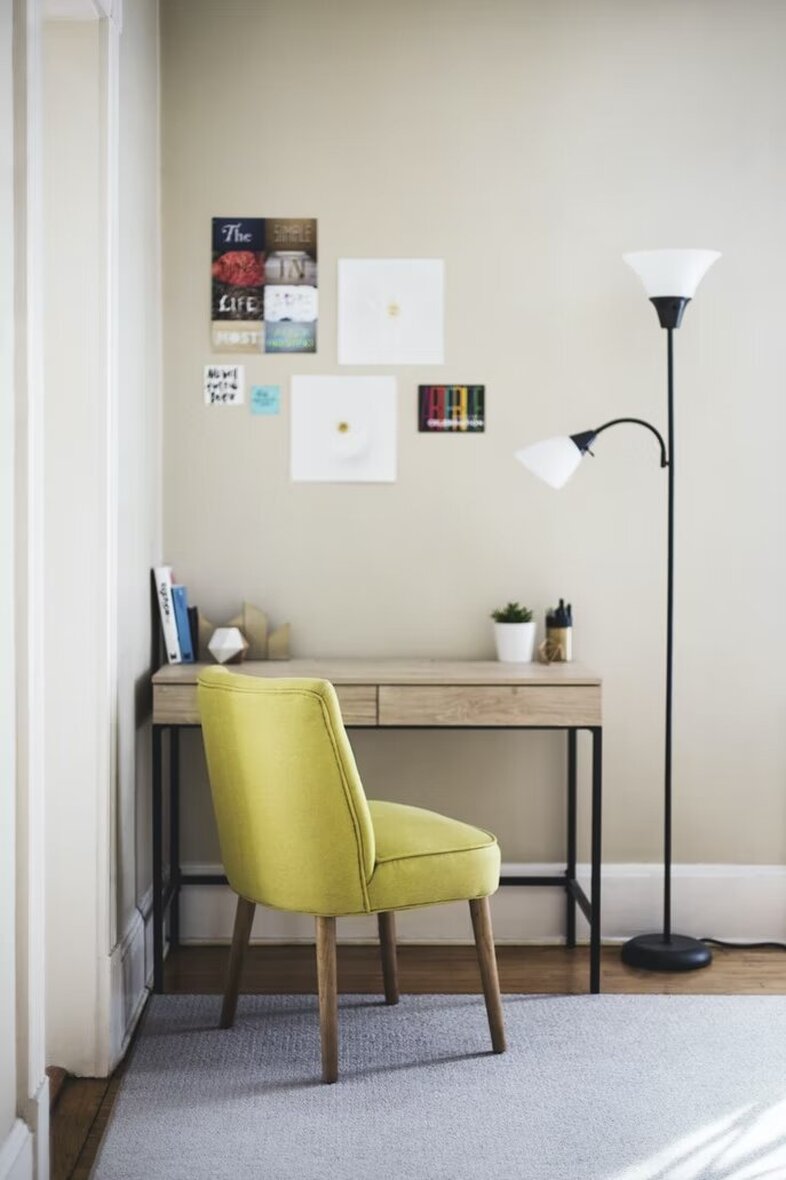





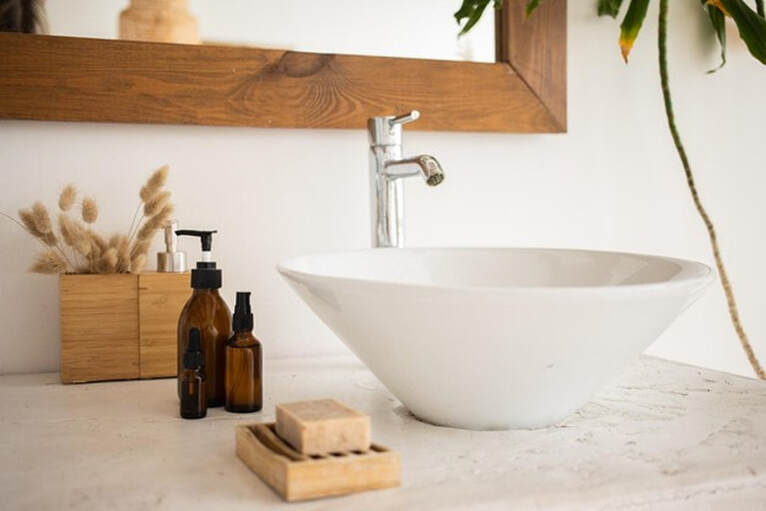
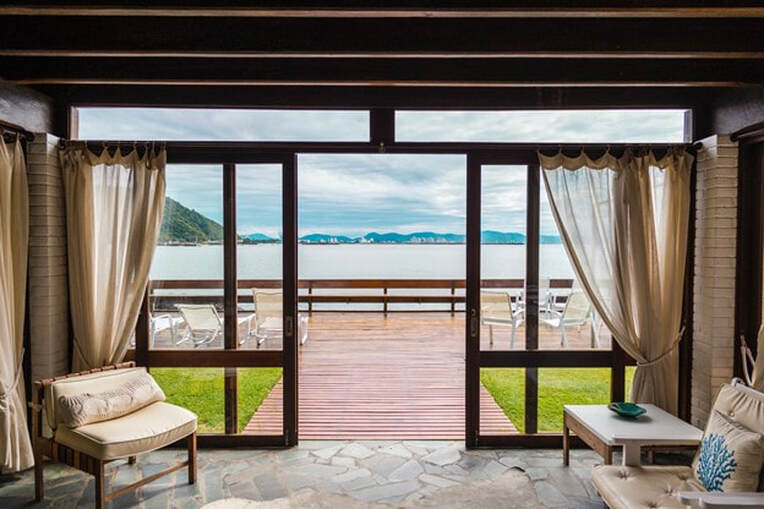

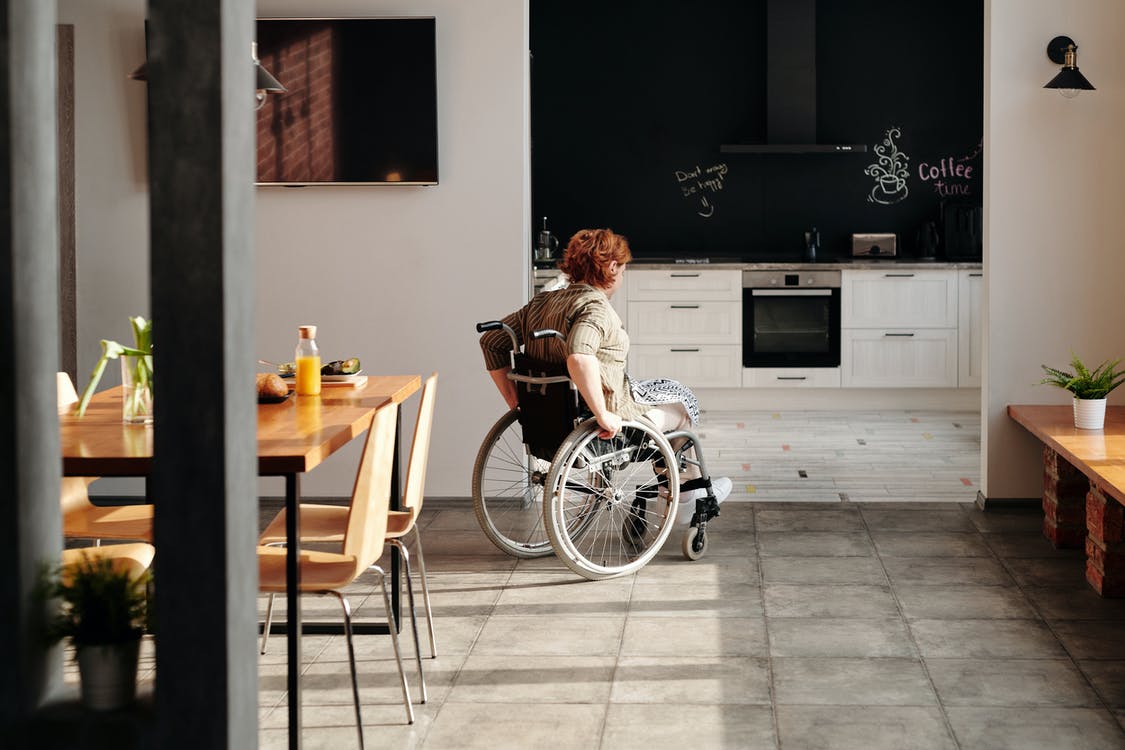
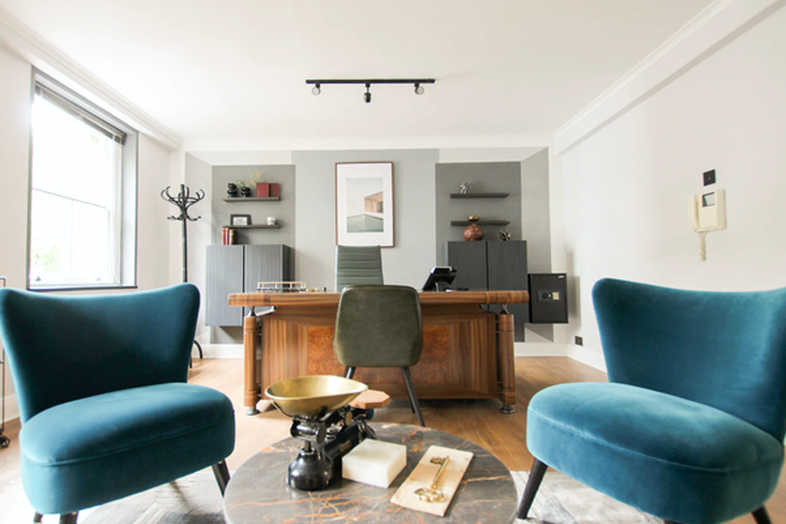
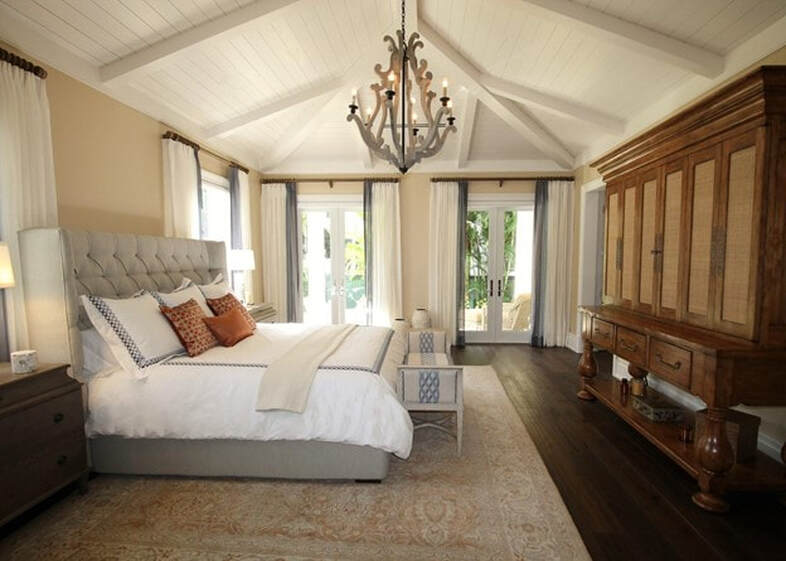

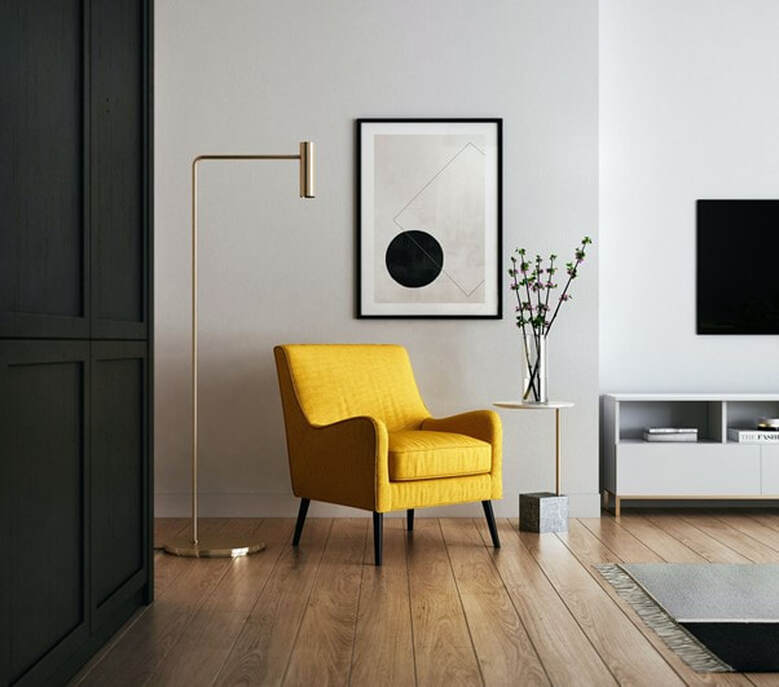






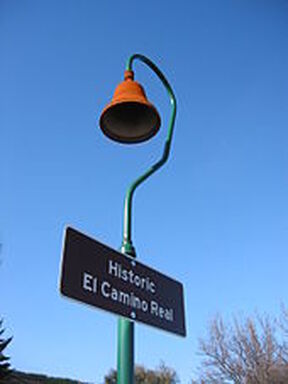



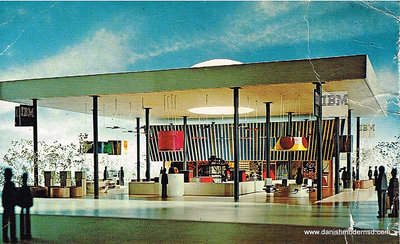

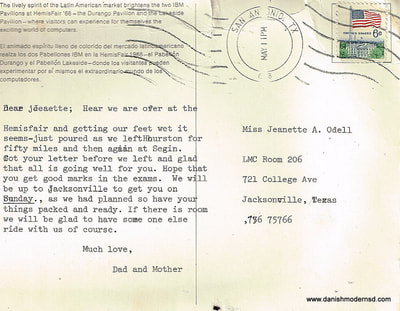
 RSS Feed
RSS Feed